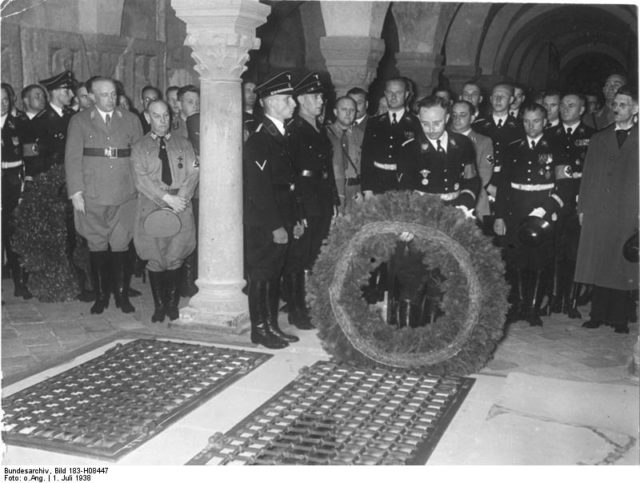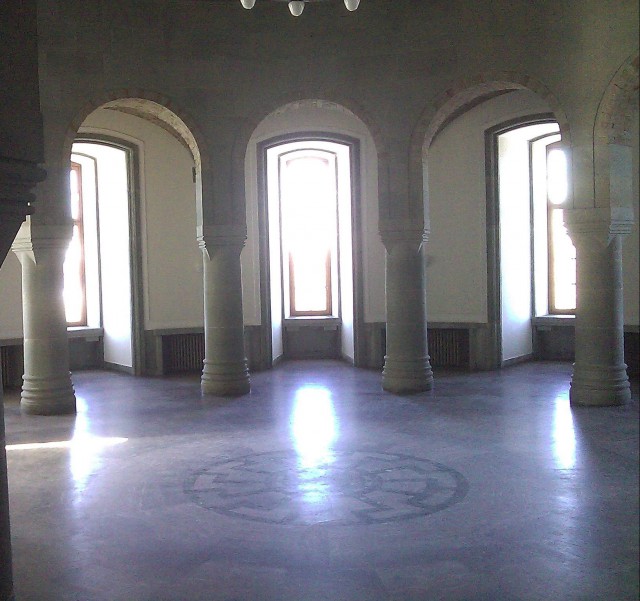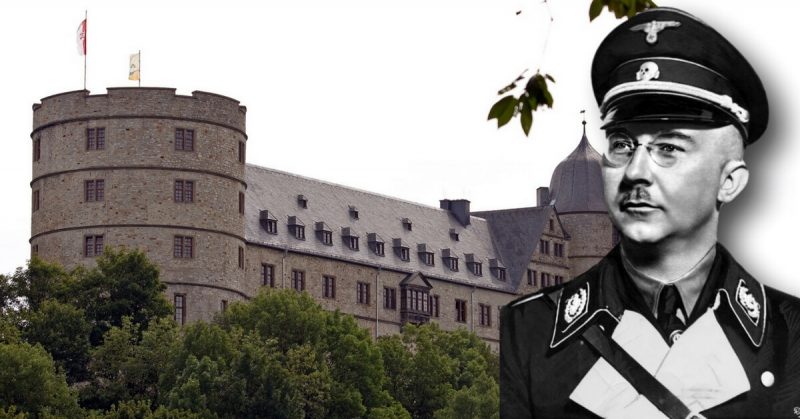The castle of Wewelsburg overlooks the village of the same name in Westphalia, Germany. It once belonged to the prince-bishops of Paderborn, and after that to the Kings of Prussia.
In 1933 it went into the hands of Heinrich Himmler, a leading member of the Nazi Party and head of the Schutzstaffel (SS), the elite military wing of the Nazi Party. Only pure Aryans were permitted to be members of the SS.
Himmler was intensely interested in mysticism and the occult. He chose Wewelsburg as his home and the headquarters of the SS. More than that, he made Wewelsburg a kind of spiritual center for his strange beliefs.

The SS revered the castle as a place of mystical power. It is located near the site of the Battle of the Teutoburg Forest, where German tribesmen defeated the armies of Rome in 9 BC.
Himmler redesigned the castle and named its rooms after military heroes in Teutonic history and folklore, such as King Arthur, King Henry the Lion, Widikund and Frederick the Great.
The walls were decorated with swastikas, ancient Germanic runes, and other mystic German symbols. Unique tableware, painted with the same symbols, was made for the castle.

The castle was filled with works of arts glorifying the German people and their achievements. In the basement, there was a huge swastika where SS ‘heroes’ were cremated.
Himmler also built a room with twelve pillars, representing King Arthur’s Knights of the Round Table. A sacred flame guarded each pillar.
In fact, Himmler thought of Wewelsburg as a center of mystic power. Twelve SS officers became the new Knights of the Round Table and performed occult rites in celebration of the National Socialist state.
They believed the number twelve was of great significance. The SS was divided into twelve departments with twelve leaders.
There were twelve pedestals in the castle vault, and twelve spokes in the Black Sun: a symbol in the floor that represented the twelve SS ‘knights.’
Himmler believed that after the final victory of the German people Wewelsburg would be the spiritual center of the world. The SS would become the priests of the new world. Before campaigns, the leading SS commanders were called to the castle to prepare them spiritually.
Himmler issued members of the SS with rings engraved with skulls and mystics symbols. When a member of the SS died these ‘death’s head rings’ were brought to Wewelsburg and placed in a casket.
Nobody knows where those 11,500 rings are now, but it was rumored they were buried in a nearby mountain.
When the end of the Third Reich drew near, and all hope for a victory was lost, the castle commander fled to escape from the hands of the US 3rd Armored division. Himmler, however, had not forgotten about the castle and even so late in the war he ordered an SS Major to destroy it. He did not want his bit of Nazi ideology to fall into the hands of the Allies.
On Saturday, March 31, 1945, the destruction of the castle was attempted, but a lack of explosives forced the SS men to choose to blow up only a couple of buildings and a tower and then set the rest on fire. They then quickly changed into civilian clothes and fled the scene.
In 1948 restoration of the castle began and in 1950 it became a museum and a youth hostel. Thirty-two years later it became a war memorial under the title Wewelsburg 1933-1945: Kult- und Terrorstätte der SS.
The museum’s history department was reopened in 2010. It has a permanent exhibit that presents the strange story of SS activities in the castle.
